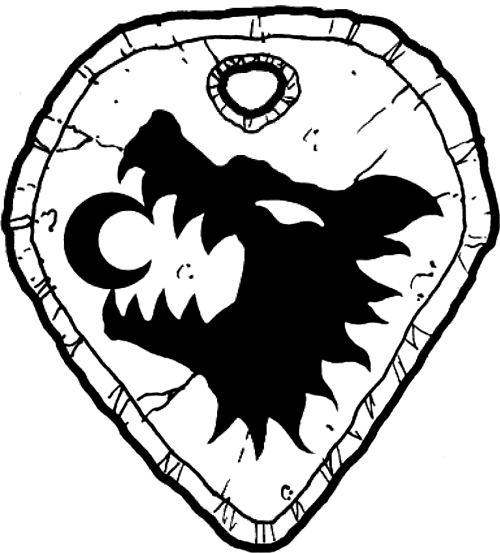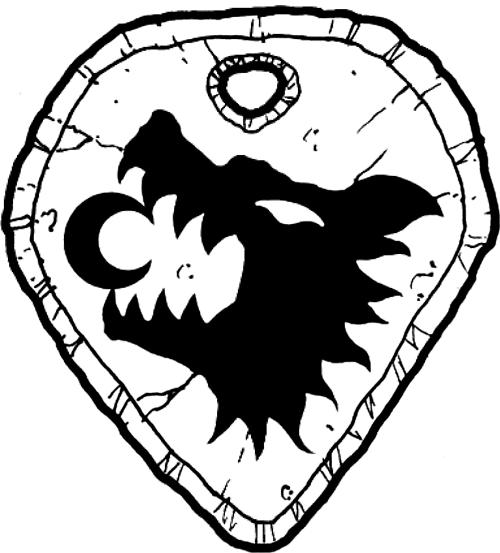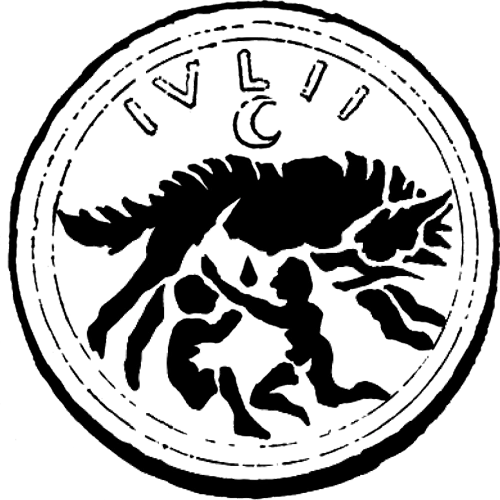Each Kindred is a member of a clan. A clan is a group of vampires who all share common characteristics. Popular Kindred mythology suggests that all vampires are assumed to have descended from one common Kindred, the founder of that clan, though no one knows who those founders might be. When a vampire Embraces a new Kindred, the progeny is of the same clan as the progenitor. Certain “sub-clans” of vampires also exist, known as bloodlines, but a vampire can never change her clan.
A clan is a vampiric lineage. The Kindred acknowledge five clans, and all Kindred belong to one clan or another. The most widely accepted theory regarding clans is that they are like “families” of vampires. Members of clans all inherit certain mystical commonalities, from acumen with certain Disciplines to traditional shortcomings for their particular type. One of the failings of the “families” theory is that none of the clan progenitors are reliably known, and only a few are guessed at with any degree of confidence. Certainly, the clans came from somewhere — but where? In a modern context, only two Kindred are known to have no clan, and they haven’t reliably demonstrated that they’ve been able to Embrace over the course of their Requiems. These vampires, the legendary Dracula and the Roman centurion Longinus are responsible for the creation of certain covenants, not clans, but might they be on a path toward clan creation themselves? And if the origin of clans doesn’t lie with certain progenitor vampires, from what source do clans originate? If Longinus and Dracula have no clan, who’s to say that other, more secretive Kindred haven’t also suffered the curse in the same way?
Tonight, the influence of the clans is felt almost everywhere. The five clans have a presence throughout the Western world, or so it is believed. The Kindred definitely came to the New World along with the early colonists, suggesting that these vampires are European in origin, or that they grew out of the civilizations that first populated the world and followed the movements of mortal men. Oral histories and sparse records indicate that some vampiric presence existed among the tribal cultures of North America before its colonization, but whether these creatures were members of clans or solitary, unique beings — or even if they were truly vampires at all — cannot be determined. While information on the Far East is fleeting, members of the five clans are known to be active there, as they are in Africa, South America and much of the Middle East. Still, little is known about how indigenous culture shapes the understanding of clans in all these regions, and anyone attempting to study the phenomenon is probably wise to take no presuppositions with him.
Daeva

The Courtesans

The Daeva came from Asia to Rome in ancient times. To the Propinqui, they were known as cinaedi for their perversions and debauchery.
Gangrel

The Wanderers

Geographically, the Gangrel seem to hail from what is modern Eastern Europe, where they came into contact with the nascent Camarilla and were reluctantly drawn into that society.
Julii

The Founders

Masters of the Camarilla, lords over the dead, witnesses to a stum- bling Empire’s final fall, the Julii are synonymous with Rome’s lofty nobility and enduring strength. So long as Rome stands above, the Julii rule below.
Mekhet

The Seers

The origins of the clan lie in the deep nights of ancient Egypt, where they fled the sun into the necropolis and learned the secrets of the dead.
Nosferatu

The Worms

In a city of chaos and indulgence, the dead keep their fears hidden away in the dark. Embodying those fears are the Nosferatu, the monsters of Necropolis, who cultivate fear and wield it as a weapon.
Lignées
Larvae

Brutes

Criminal mercenaries, the Larvae hired themselves at a premium, mercilessly killing their targets, living or otherwise, in the most painful and humiliating manner the Larvae conceived. They were, as their name suggests, the “malicious dead.”
Licinii

Pretenders

Licina Piso, the founder of the bloodline, was Embraced by a Nosferatu who was himself possessed by a Strix. As a result, the childer she sired possessed both Julii and Nosferatu characteristics: specifically, they suffer from shocking deformations of their limbs and a predisposition to losing Humanity. The Licinii, however, are largely unaware of their hybrid nature; most of them regard themselves as pure Julii who are under some sort of curse.